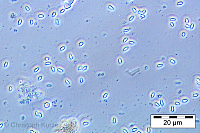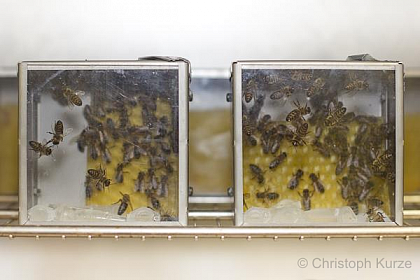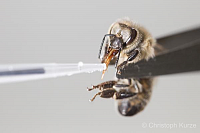Selection responses of Nosema sp. to its honeybee host.

Currently two Nosema species are known to commonly infest the European honey bee (Apis mellifera): N. apis and N. ceranae. Although the Asian N. ceranae was initially associated with drastic colony losses in southern Europe, more recent studies report a similar moderate virulence like N. apis. However, both pathogens have been shown to reduce the fitness of the honey bee host.
The extensive breeding effort by Danish beekeepers against the native N. apis has produced a Nosema tolerant honey bee strain, which revealed a strongly up-regulated immune response when challenged by N. cerana infection compared to an unselected strain (Huang et al. 2012 J Invert Pathol).
In the scope of our current research, we aim to understand how the Nosema genome might respond to the adaptation of its host in artificial selection experiments under controlled laboratory conditions. The results might reveal novel insight into the evolution of virulence in Nosema virulence and the speed at which the Red Queen acts in this particular model system. We address specific eco-evolutionary questions with regards to:

1) Pathogen selection against in haploid and diploid hosts
We are going to disruptively select Nosema for high and low virulence (spore load) in drones with either presence or absence of the resistance allele, which have otherwise homogenous genomes, over multiple generations. This might reveal if and how the pathogen genome can respond to the resistance of its host.
To assess whether the four selected Nosema strains are also effective in diploid hosts, we plan to infect individual workers (homozygote, heterozygote or absence of resistance allele). These results will reveal whether additive genetic effects dominate the selection of parasite virulence.
2) Host-pathogen interactions at the transcriptome level

To assess the local interactions of both host and pathogen transcriptomes, we will use RNA deep sequencing based on extracts from germinating Nosema cells (contained in gut tissue) and fat bodies (central organ for immune defence of the host). From these data we will gain a more holistic understanding of host-parasite co-evolution and how selection has changed genomic responses to its host. This will also reveal when and how the candidate resistance gene of the host interferes with the Nosema infection. Moreover, we might also learn about gene cascades and physiological pathways that have been affected by selection of host resistance in the first place.
